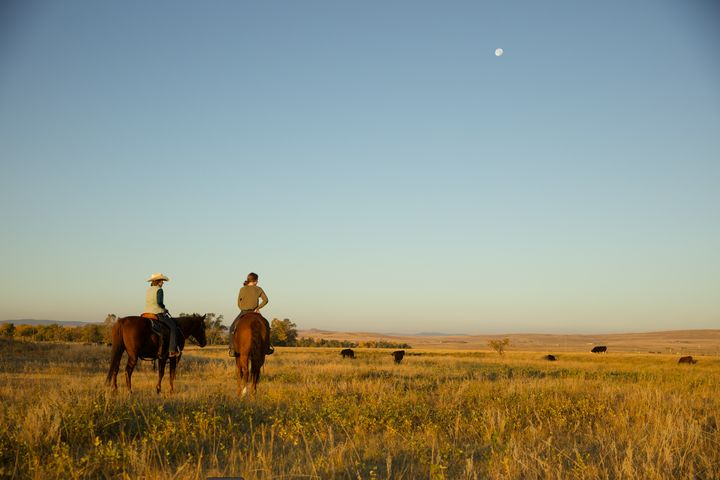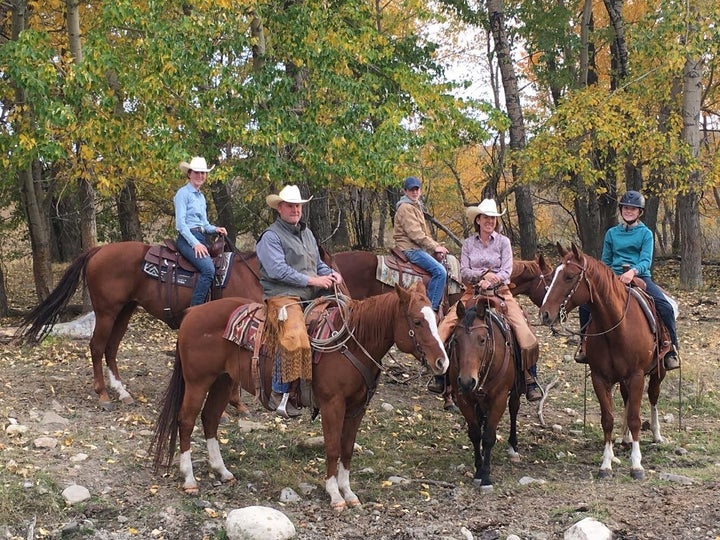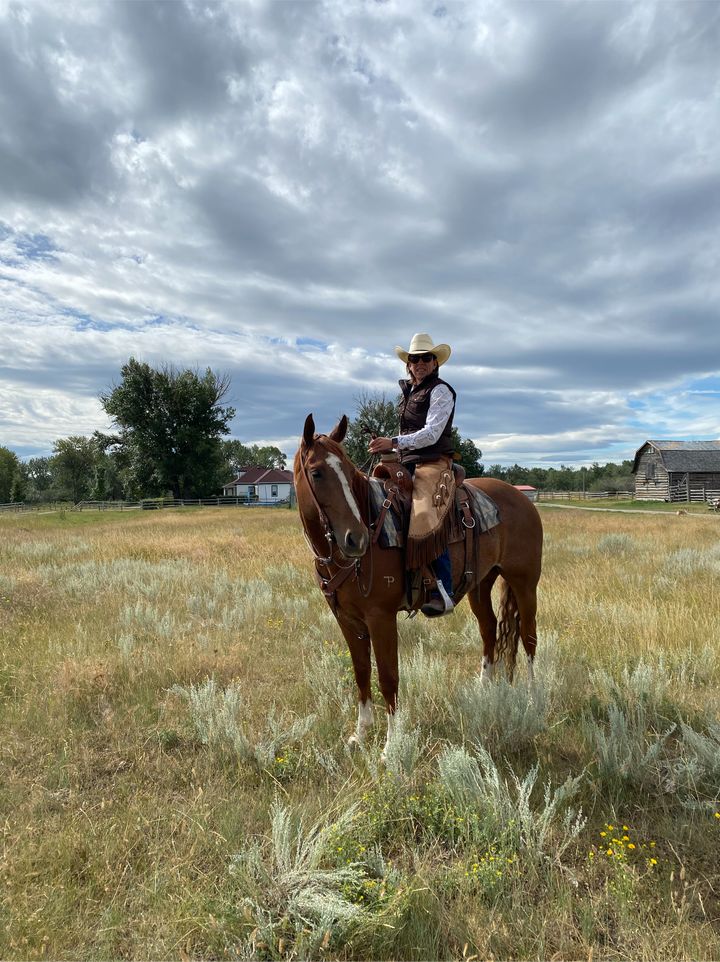
The following is presented in partnership with McDonald’s Canada.
Canadians might be surprised to see what daily life looks like on Jeanne White’s family ranch in Claresholm, Alberta. White concedes her ancestors would be surprised, too.
“When I think about my great-grandfather, in his time, women were never expected to run the ranch,” White said. “Now—my 17-year-old daughter is arranging her last year of high school around calving season. There’s no gender stereotype about who does what kind of work on this ranch today.”
White’s great-grandfather first acquired the ranch in 1892. At the time, it was mounted police horses that grazed the land. Now, White’s family ranch is a cattle ranch run primarily by White, herself, as the fourth generation, as well as her two daughters and son, all under the age of 20 (and some additional hired support). It operates with a herd of a few hundred cows, and is working towards being certified sustainable by the Canadian Roundtable for Sustainable Beef (CRSB), meaning it will be (third-party) audited as meeting standards that define sustainable practices across five main areas, set by the CRSB: natural resources, people and community, animal health and welfare, food, and efficiency and innovation.
In practice, that means the ranch employs an evolving set of innovative and environmentally responsible methods. At the same time, it ensures the health and viability of the land and the humane treatment of animals.
White and her family’s ranch are one of the many operations in the Canadian ranching community who have championed sustainable practices to drive positive change in the beef industry. Helping advance sustainable beef production in ranches like White’s has also been an important goal for McDonald’s Canada for some time.

McDonald’s Canada is a founding member of the CRSB, and has been collaborating with Canadian farmers and ranchers like White since before the establishment of the CRSB in 2014, to develop standards for sustainable beef production here in Canada. Recently, the company announced a portion (at least 30 per cent) of the beef used in its classic Quarter Pounder patties is sourced from CRSB-certified sustainable farms and ranches.
Sustaining Our Future
“There’s definitely a future for my children, and their generation to be involved in the sustainability movement of agriculture,” White said. She adds that, seeing brands on the scale of McDonald’s Canada commit to the beef industry has been extremely encouraging. “It gives us a lot of hope that a company as big as McDonald’s is really working hard with ranchers to commit to better outcomes for animals, the environment, and all of us.”
As one of the largest buyers of ground beef in Canada, McDonald’s uses 100 per cent Canadian beef in its patties and, together with the CRSB, has been a driving force for sustainability in the Canadian industry. To continue to strive toward change, this year, the Canadian beef industry established new ten-year goals to address greenhouse gas and carbon sequestration, animal health and welfare, land use and biodiversity, and are working together to meet them. Additional goals around water, human health and safety, beef quality and food safety and technology are soon to follow.
The 2020 Cattle Ranch
Since many of us are removed from the agriculture industry in the modern world, few have an accurate idea of what a contemporary ranch looks like and how it operates. For White, running a sustainable ranch in 2020 means keeping up with the latest innovations in agriculture science and technology.
“The types of tools available to us now might surprise people. I can use an app on my phone to keep track of the herd—not just where they are, but to monitor their health,” White said, and adds it’s not just new tools; that methods have changed, too.

“We have a beautiful creek running through our ranch, but that’s often not the cattle’s main water source. We control access to it and plot out grazing patterns seasonally to lessen environmental impacts.”
These sustainable choices often have the added benefit of being less physically intensive. With a significant amount of the work around the ranch being done by White and her son and daughters, they are more inclined to look for smarter, more sustainable solutions that they can maintain themselves.
“We’re more aware than ever about how our decisions as individuals, but also as ranchers, can have impacts, both positive and negative, and we’re always evolving,” White said. “But I don’t have the voice or backing that the largest food restaurant chain in the world has, so I’m grateful for the support!”
This year, McDonald’s Canada announced that a portion (at least 30 per cent) of the beef used in its classic Quarter Pounder patties are now sourced from CRSB-certified sustainable farms and ranches. White’s children will also be featured in a new ad campaign reinforcing the brand’s commitment to sustainable beef and the future of the agricultural industry in Canada.